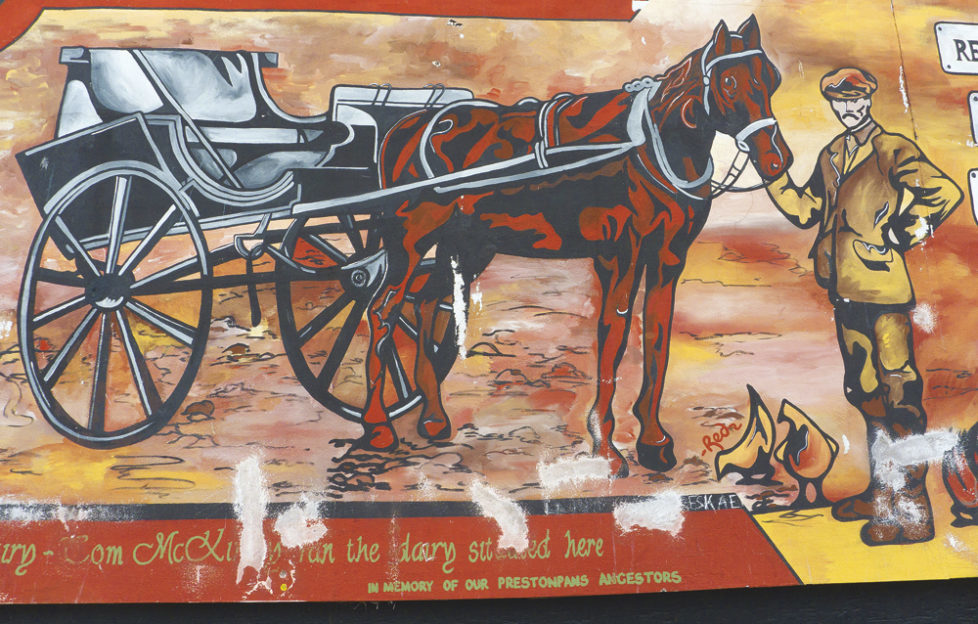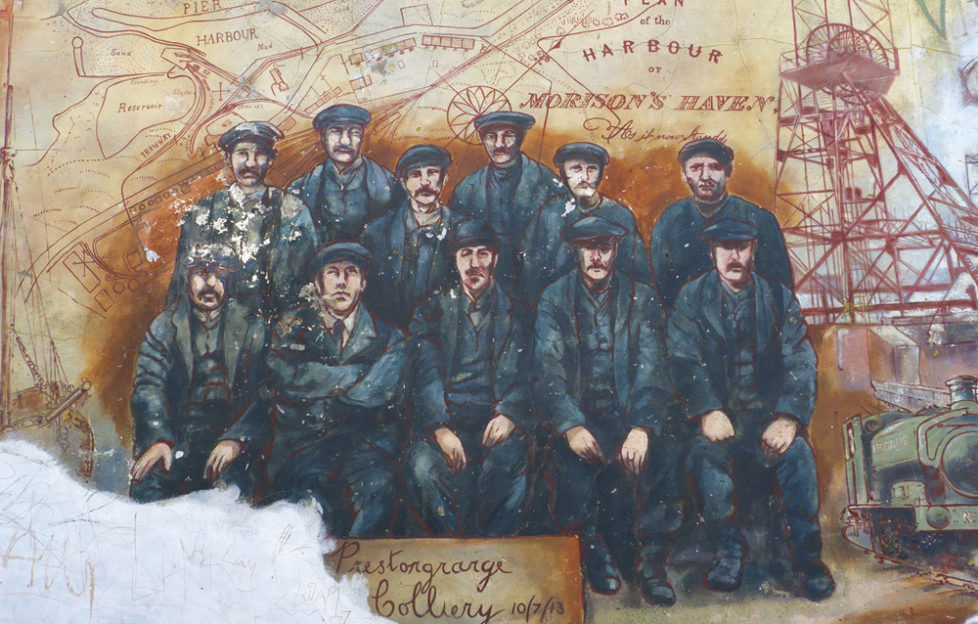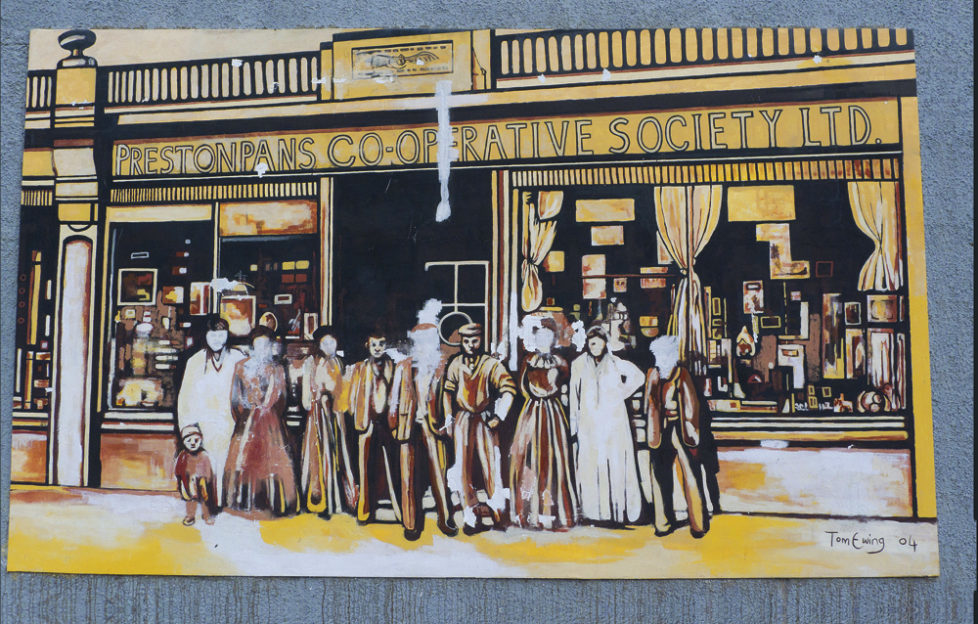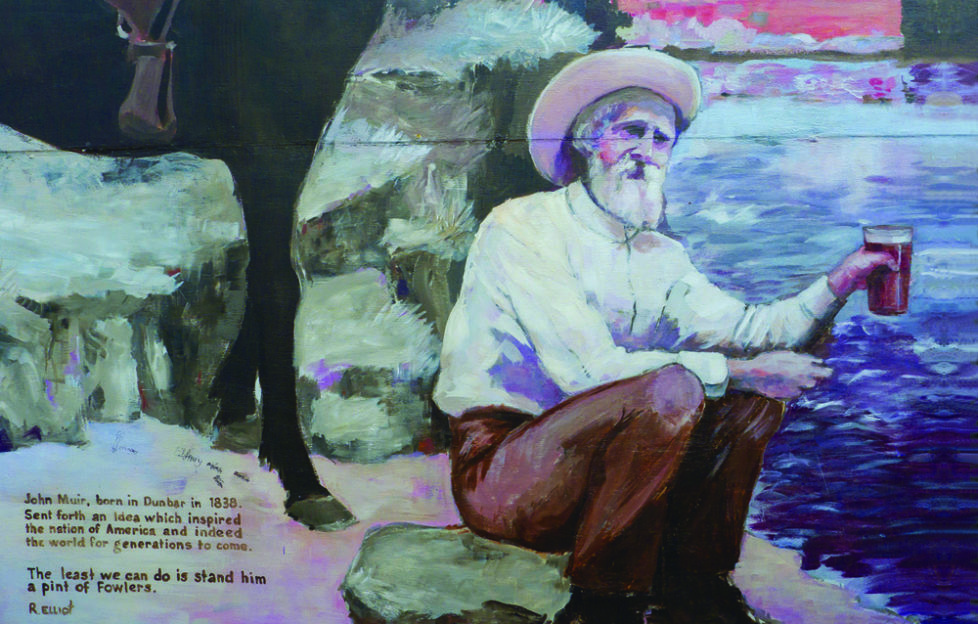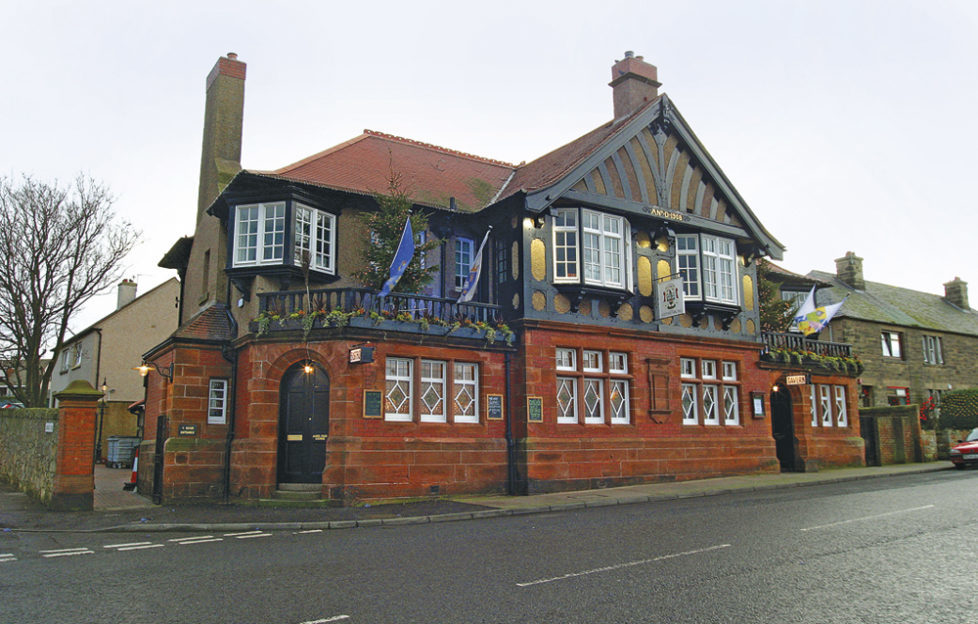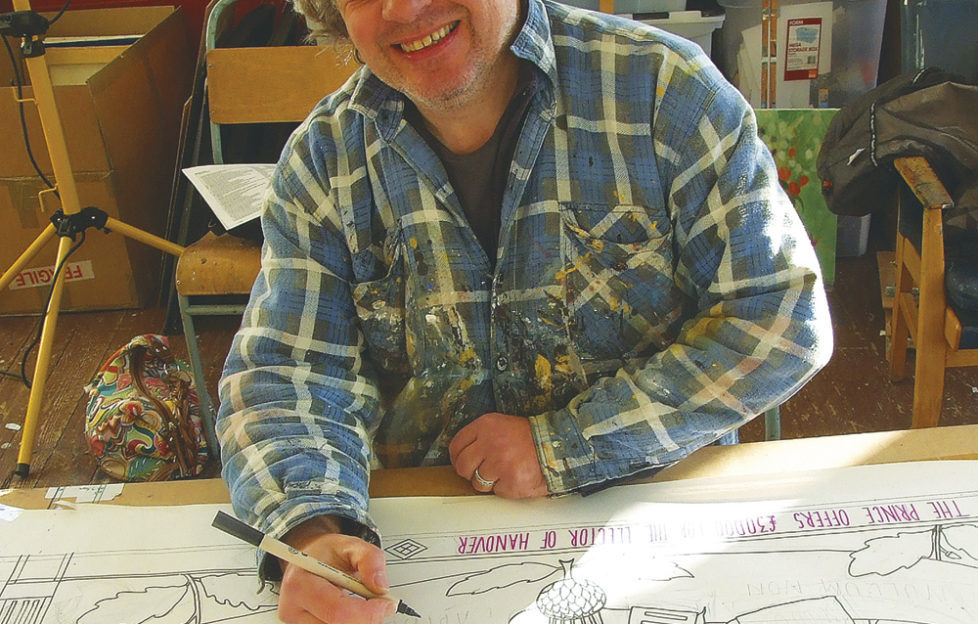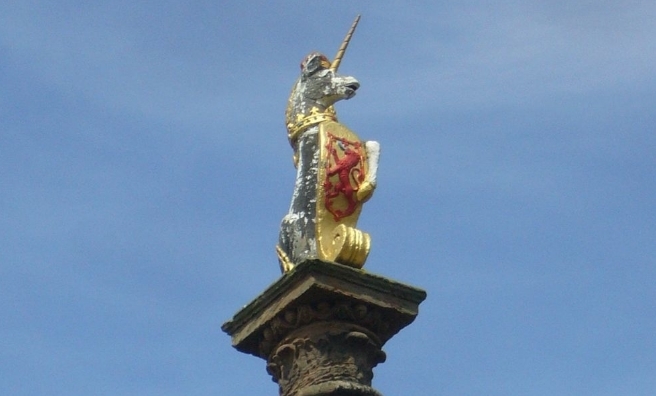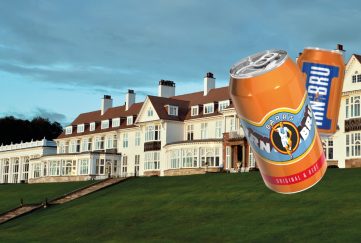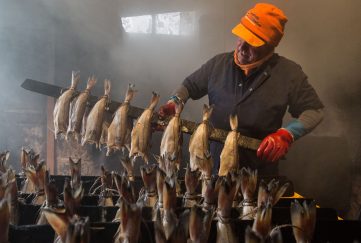Every Wall Tells A Story
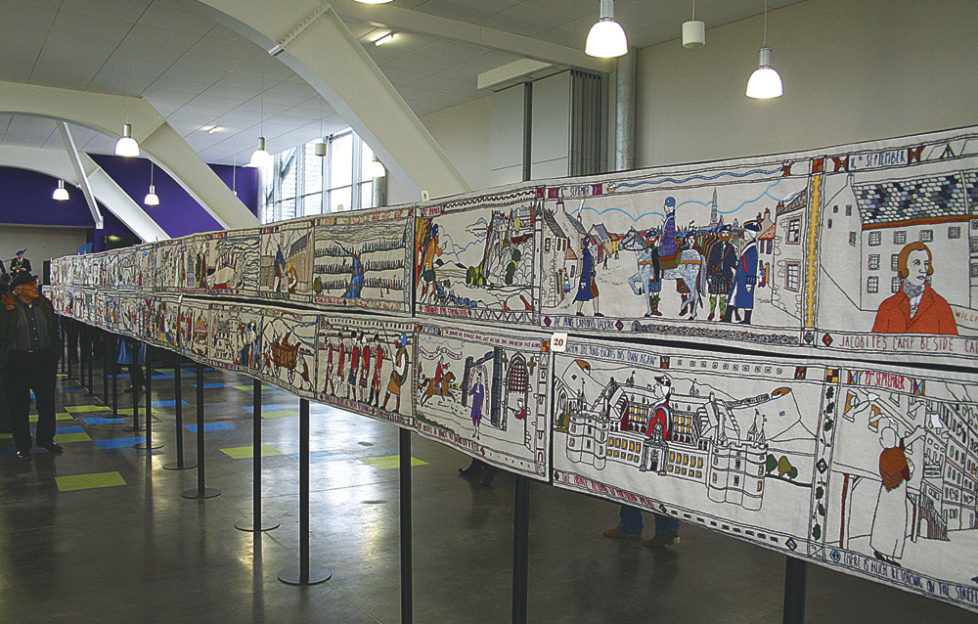
Situated on the gorgeous East Lothian coastline, Prestonpans is an attractive and welcoming little town with a fascinating history.
The name Prestonpans translates from Old English and Scots as “the priests’ village by the salt pans” and refers to the salt panning undertaken by the monks of Newbattle Abbey during the 13th century. Coal and the harbour were also crucial in the development of Prestonpans.
But rather than detailing over 1000 years of history in books or on the internet, the people of Prestonpans (or Panners, to give them their correct title) have displayed their culture and heritage on the walls and buildings around the town in a series of magnificent murals. As well as depicting key moments and industries in the town’s history the murals also portray famous Scots including John Muir, Sir Walter Scott and Robert Burns. The significance of and interest in these unique and intricate artworks has led to Prestonpans being officially designated Scotland’s Mural Town.
The main protagonist behind the murals is the artist Andrew Crummy, who has been convener of the Prestonpans Mural Programme since its inception in 2003. Andrew, who was born in Craigmillar, Edinburgh, graduated as an illustrator from Dundee’s Duncan of Jordanstone College of Art and then with an MA in Design from Glasgow School of Art.
“I feel the murals have had a positive effect on the community. The people of Prestonpans are very proud of their murals and public artwork has become the norm.”
“There are over 50 murals and sculptures within the town,” he told me. “They range from a few metres to over 20 metres in length. We were keen to involve as many of the local community groups and schools as possible so the ideas were often a combination of Gordon’s vision and the local community.“
The murals are on the local power station, train station, schools, bowling club, shops, community centre and museums. They are very much part of the local community and showcase the talents of local and professional artists.
Sixteen years on, what has been the effect of the mural trail on Prestonpans? One of the artists involved, Tom Ewing, is certainly upbeat about its value. “I feel the murals have had a positive effect on the community as a whole. The people of Prestonpans are very proud of their murals and public artwork has become the norm.”
With many of the bigger industries gone, tourism is becoming increasingly important to Prestonpans. Upward of 25,000 visitors a year come to see the murals and, as Andrew explains, they have become a catalyst for change. “There are now a range of events and projects throughout the year including The Three Harbours Arts Festival, artists’ studios, drama groups and heritage groups. They did not come directly out of the murals, but out of an ethos of, as Gordon Prestoungrange would say, letting a thousand flowers bloom.”
Prestonpans and its Panners are obviously incredibly proud of their murals, to such an extent that when you walk around the town not one bit of graffiti can be seen. The only damage has occurred because of the East Lothian coastal weather, which has taken a little toll on some of the murals.
However, Tom now leads a restoration programme to rectify any further damage, all of which will keep this little town at the forefront of public art.
Prestonpans History
In some stories, Prestonpans was founded in the 11th century by a shipwrecked traveller, Althamer, and his companions.
Finding it impossible to get home, the survivors of the wreck decided to remain where they were and founded a settlement named Althamer in honour of their leader.
When the monks of Newbattle and Holyrood arrived in the area in 1184 the settlement they found was named “Aldhammer”. The monks gave the settlement a new name, Prieststown or Prieston.
Because of the salt manufacturing carried out by the monks using pans on the sea shore, the name developed into Salt Prieststown and Salt Preston, and finally Prestonpans.
Prestonpans facts
- Originally founded in the 11th century
- One of the first post-Reformation churches was built in Prestonpans, in 1596
- The church was greatly remodelled in 1774.
- 10 years after the original building of the new church, Prestonpans became a Parish in its own right, having previously formed part of the Parish of Tranent.


